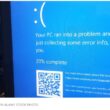Virtual USA extends data-sharing capabilities
The Department of Homeland Security’s Science and Technology Directorate unveiled Virtual USA Gen 4, the latest generation of the Web-based initiative focused on cross-jurisdictional information-sharing and collaboration among the homeland-security and emergency-management community. Before Gen 4, Virtual USA was a state-centric tool, but the new version expands information-sharing across states, counties and cities.
“If you were a state EOC, you could share with another state EOC,” said Marc Kaplan, S&T program manager. “We understood that [the system] didn’t take it as far as the first-responder community wanted to take it, but we had to start somewhere.”
Kaplan said Gen 4 now lets users share information across states, down to the local and county level. Information can be shared from one county to another, city to city, and across state boundaries.
“So local entities, a county, can share outside of the state because obviously critical incidents aren’t regulated to jurisdictional boundaries,” he said.
Virtual USA lets homeland security and emergency management access critical information and customize the display of that information based upon their unique needs in a secure environment, said Secretary Janet Napolitano when the beta-version was unveiled in 2009.
“Virtual USA makes it possible for new and existing technologies to work together seamlessly during disaster response and recovery and gives the public an opportunity to contribute information in real-time to support the efforts of police officers, firefighters and other emergency management officials,” she said.
Indeed, Virtual USA links disparate information tools and technologies in order to share the location and status of critical assets and information,
“Virtual USA is a repository of data for homeland and emergency first responders, where you can find data you need to help you in planning, preparing for or responding to a critical incident,” Kaplan said.
Since January 2011, Virtual USA officials worked with the states of Alabama, Arkansas, Illinois, Indiana, Kentucky, Mississippi, Missouri and Tennessee, as well as FEMA Regions IV and VI, to test the program. Several pilots were held as well, including the Southeast Regional Operations Platform Pilot (SE Pilot) and the Pacific Northwest (PNW) Pilot.
Kaplan noted that Virtual USA also played a role in supporting the Central U.S. Earthquake Consortium (CUSEC) in May, where member states and partners leveraged Virtual USA to discover and share information throughout the region during a mock earthquake event in the New Madrid Seismic Zone.
Virtual USA Highlights
- Integrates Existing Frameworks and Investments: Virtual USA utilizes current information-sharing platforms to permit new and existing technologies to seamlessly exchange information with one another.
- Draws on Local Input: Virtual USA is based on the needs of local and state first responders to manage data access within their own jurisdictions and to share information with relevant jurisdictions across the nation.
- Employs a Comprehensive Approach: Virtual USA is not limited to information exchanges between two agencies; instead, the initiative fosters dynamic information sharing among all federal, state, local and tribal practitioners.
- Provides a Flexible, Accessible Platform: Because Virtual USA uses open data standards and open source software, more states and localities can join this information exchange project.
- Involves Everyone: Virtual USA allows Americans in their own communities to contribute information — in real-time — to support the efforts of police, fire and emergency management officials during disasters and recovery efforts.
Source: DHS

















